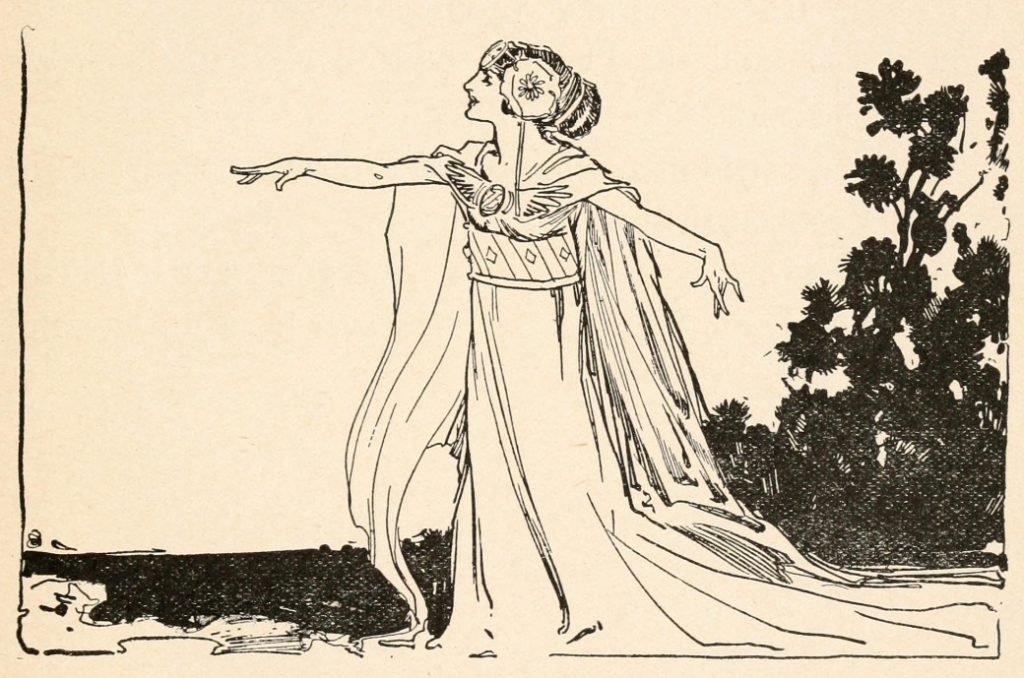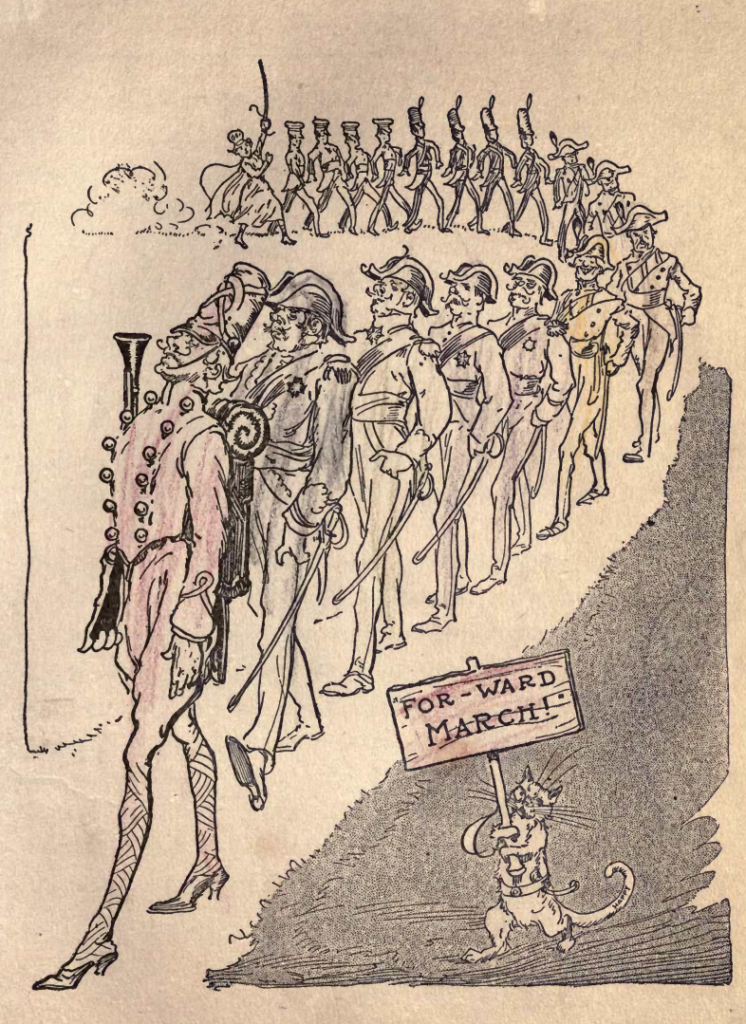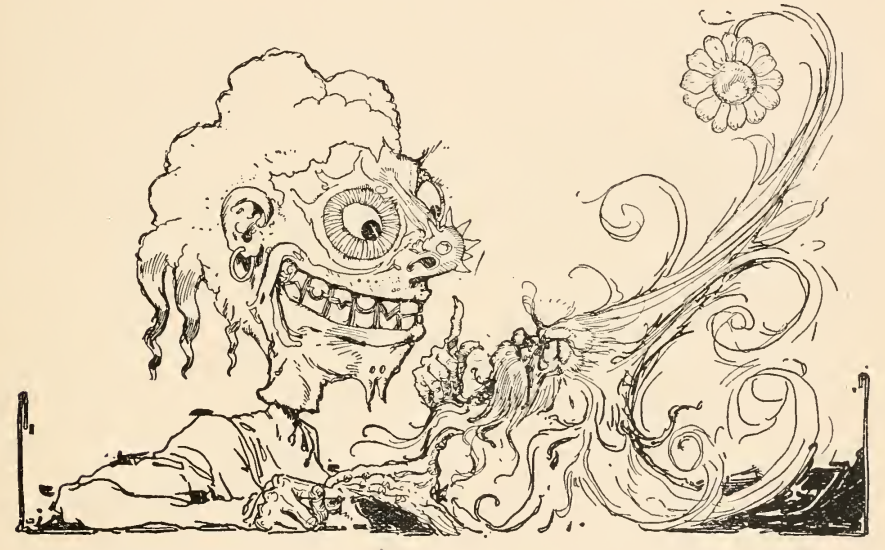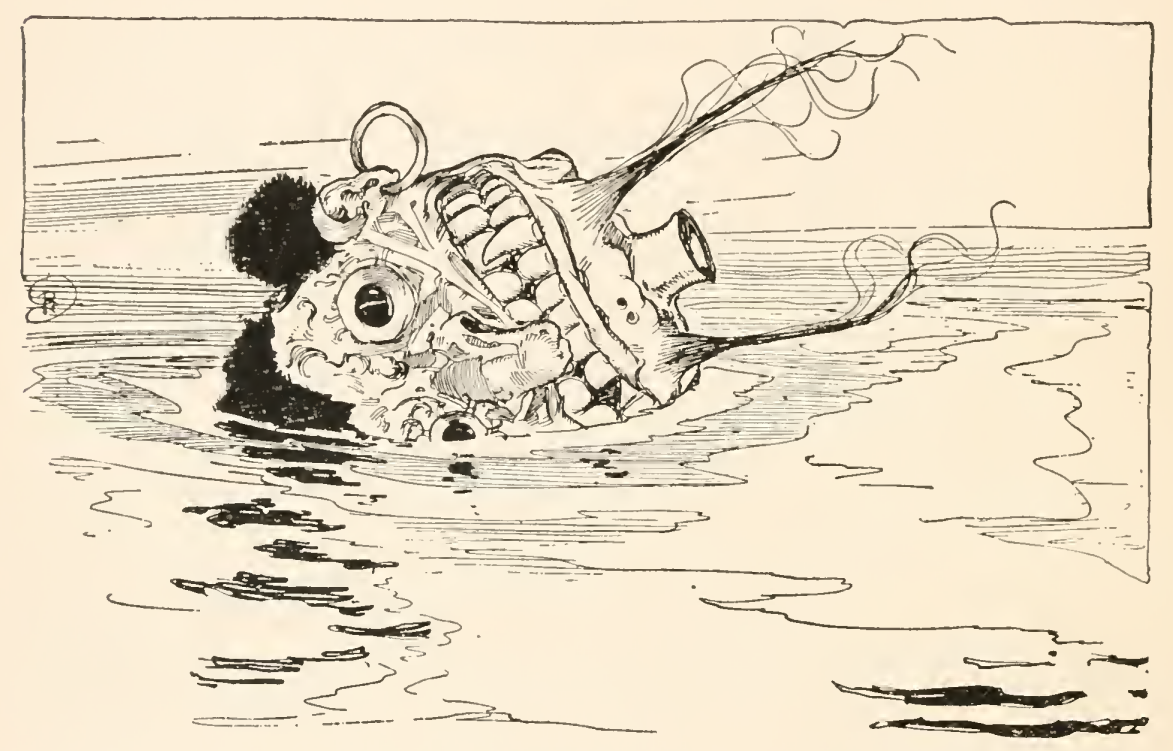
Furthermore, the most major source of Ozma’s magic power until after The Emerald City is the Magic Belt. When the Nome King first appears in Ozma of Oz, he is a powerful sorcerer. His enmity is a reasonable response to Ozma, who marches her army into his territory and directly threatens Nome sovereignty, saying, “I am here with my friends and my army to conquer your kingdom and oblige you to obey my wishes” (168). Only after the Scarecrow temporarily stuns the Nome King with eggs is Dorothy able to steal his Magic Belt, the source of his power. He shifts gradually from a dignified, friendly figure to a screaming, animalistic one and then ends, stripped of his power, weak and pitiful: “It’s gone, and I am ruined” (236). Given the hostility of every other country to his own, it is no wonder the Nome King pursues martial policy. As he observes, “In fact, no one ever comes here on a peaceful errand. I hate everybody, and everybody hates me” (Tik-Tok 96).
Despite the size of his army, the Nome King never carries out military action against his neighbors until Oz provokes him by invading his territory, threatening him, stealing his most precious treasure, and killing some of his people. In The Emerald City, he attacks Oz specifically to attain “all their gold and silver and precious stones” and “recapture my Magic Belt” (41). His desire for genocide and slavery cannot be excused, but these horrors are standard practice in the big, cold outside world. Even if Guph specifically wants to conquer Oz only out of sadism, the Nome King’s intention is to reclaim the wealth of his country that the condescending surface dwellers have stolen to enrich and beautify their own towns and bodies while patting themselves on the back for their moral superiority. The continual looting of his people’s possessions is a valid reason for the Nome King’s anger.

Reversing the dread of the Nome King’s invasion of Oz in The Emerald City, Baum cheers on the Nome King’s loss to imperial forces in Tik-Tok of Oz. “[N]o one in the world needs conquering so much as Ruggedo,” says the Shaggy Man (84). Not just defeat but conquest of the Nome King is a central theme from the first paragraph of the novel: “So here, my dears, is a new Oz story in which is introduced Ann Soforth, the Queen of Oogaboo, whom Tik-Tok assisted in conquering our old acquaintance, the Nome King” (9). The terms of the protagonists’ quest are explicitly conquest and pillage: “So, by conquering the Metal Monarch, you will win all the riches in the world” (86).
The Nome King’s actions are all self-defensive responses to another army, however unconventional, marching on his kingdom. Even taking the Ugly One prisoner, the key to his undoing, is not unprovoked. It occurs after the Ugly One trespasses in the Nome Kingdom as a gold miner (51), in other words, as another person there to steal from the Under World. After Ruggedo goes into exile and Kaliko ascends the throne, it may seem that a more popular Nome has become ruler. But outside forces appoint Kaliko the new Nome King without any input from the Nomes themselves. This choice is imposed by the imperialistic power that effected the coup, namely the country of Tititi-hoochoo, an immortal who acts as a global policeman.



Let’s also reconsider the categorization of “evil spirits” introduced in The Emerald City. The evil Whimsies and Growleywogs are coded as Indigenous societies, as non-white. The Whimsies have a “chief” and, in Neill’s illustrations (63, 64), wear masks with wide eyes, jewelry, and curly hairstyles suggestive of African stereotypes, with large noses resembling caricatures of Native Americans. Neill also draws the Growleywogs (81) in vaguely “tribal” attire: shirtless with headbands, sandals, and skirts. They too have the long noses, as well as a covering of fur that causes them to appear dark-skinned, a rarity in the Oz novels. Ironically, the imagery of slaving, plundering, backstabbing evil may evoke Indigenous nations who were historically recent victims of such crimes in the real world. In his own first-person narration, Baum, a minor character in the fiction, defines the wickedness of these “evil spirits” racially: “I am told that the Erbs are the most powerful and merciless of all the evil spirits, and the Phanfasms of Phantastico belong to the race of Erbs” (126). Though still common in fantasy stories in the 2020s (thanks, Tolkien and D&D), the trope of an ontologically evil race is racist by definition.
However, Baum contradicts this notion, providing specific physical and social reasons for the “evil” dispositions of the Whimsies and Growleywogs. The Whimsies’ unusually tiny heads cause them to physiologically lack “sense enough to know when they [are] defeated,” accounting for their violence and alienating childlike behavior. It also causes them such shame that they wear large false heads (60–61). In this context, the Nome King’s offer to magically enlarge the Whimsies’ heads is an offer for the opportunity to be allowed into broader fairyland society.